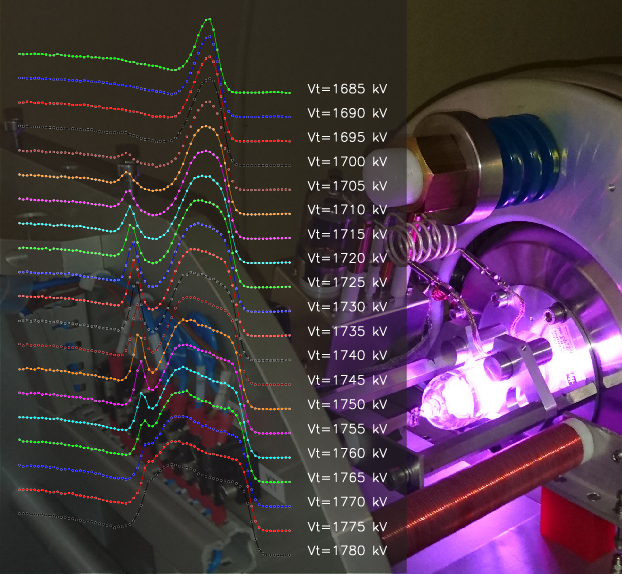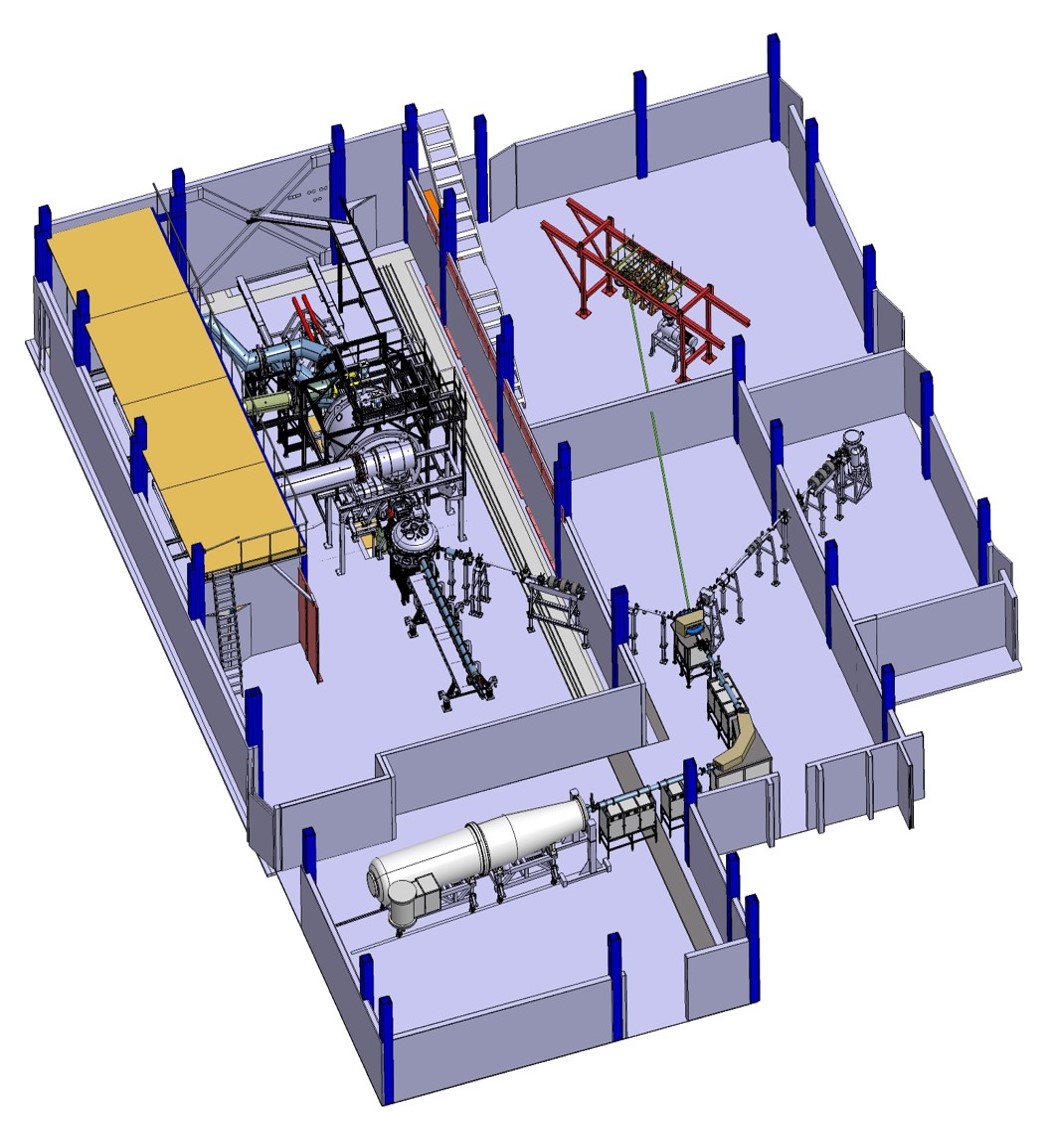From the entrance of the DIFFER building the new Ion Beam Facility is clearly visible. This huge microscope for material properties does not look at light, but uses a stream of fast ions to probe a material's surface and subsurface. The Ion Beam Facility is connected to DIFFER's main fusion-related experiment Magnum-PSI and already performed its first measurements. Meanwhile, project leader Miranda van den Berg works to connect the facility to the institute's fusion and solar fuels experiments. The goal: following the evolving properties and reactions in energy materials as they happen.
Since its first material properties measurement last April, the Ion Beam Facility (IBF) at DIFFER is getting further into shape with more experiments ready to receive their own beamline. With this facility for detailed ion beam studies, DIFFER wants to add a unique new research facility for energy materials to the Dutch research landscape.

represent a silicon substrate with a thin film of
silicon carbide on top. Elastic back scattering
was used as a trial run of the facility and shows
that the system can distinguish between different
materials. Photo: the facility's ion source.
Connecting the Ion Beam Facility to experiments
Physicist Miranda van den Berg is project leader at the Ion Beam Facility, the big machine visible from the entrance of the DIFFER-building. This 3.5 MV accelerator fires a stream of energetic ions at a target material. By studying the resulting reactions, reflecting particles, and particles that are released from the material by the beam, the facility can uncover a wealth of information on material properties and composition. It is even possible to track these characteristics while they evolve during an experiment. Beamlines connect other experimental halls to the new facility, making it accessible from multiple locations.
"We are already connected to Magnum-PSI, which has just received its new superconducting magnet", points out Miranda van den Berg during a lab tour. "At Magnum, we plan to do surface and subsurface studies of materials exposed to the conditions in a fusion reactor." The ion beam connects directly to Magnum-PSI's vacuum chamber for materials analysis, so that samples can be examined directly after being exposed. The next beamline to be connected is the Ion Beam Analysis station for internal and external users. In an adjacent experiment hall, the Pilot-Upgrade experiment (currently under construction) will also receive a beamline. Van den Berg: "With Pilot-PSI Upgrade, it will even be possible to look at what happens to the sample during exposure to the plasma."
Bridge between research themes
The Ion Beam Facility is more than a diagnostic for fusion materials, says Van den Berg: "It is a bridge between the different research themes we do here at DIFFER." There are advanced plans to connect beamlines from the accelerator to an analysis station for internal and external use of the facility and to a solar fuels experiment. Possible research includes live analysis of the energy and materials streams at a catalyst that converts sunlight into fuels.

Magnum-PSI (top left), Upgraded Pilot-PSI (top) and
Ion Beam Analysis Station for internal and external users.
Connecting the facility
At this point, Van den Berg and her team can still be found in the IBF-hall to get the device ready for operations. "We are working on adjusting and fine-tuning the accelerator. At this stage, this is a lot of hands-on work on site, but when everything is completely up and running we will be in same place as the operators and scientists of Magnum-PSI in the control room."
Magnum-PSI is already connected to the Ion Beam facility, Pilot-PSI Upgrade will be connected later. A third beam line is planned to an Ion Beam Analysis Station for internal and external users of the facility. Up to five beam lines can be connected to the IBF's switch magnet, and the facility has been aligned with these future experiments in mind. Van den Berg: "In this field, you are never done learning about analysis, possibilities and the technical side of the device. I really look forward to collaborations between this facility, fusion, solar fuels, the TU/e, other universities and other research institutes. The options are really broad."
Go to the News page.